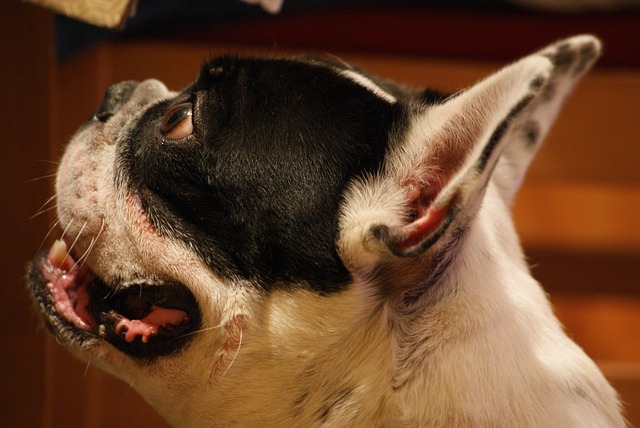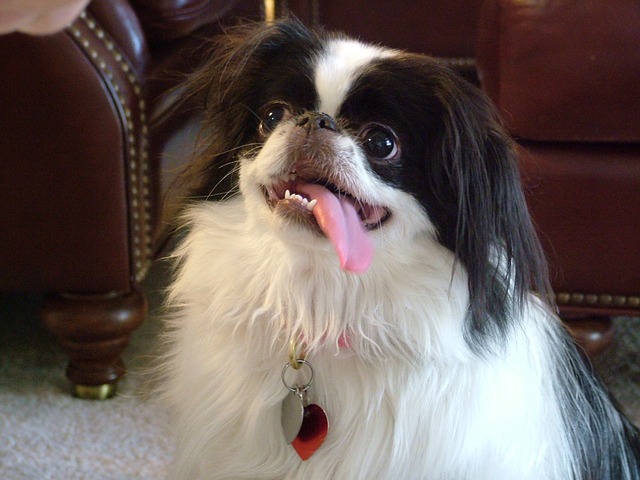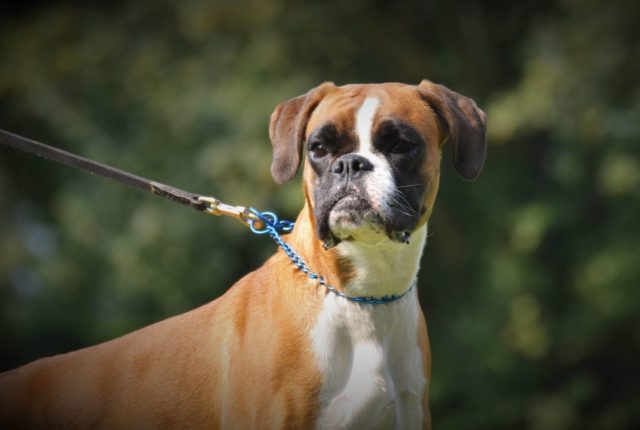The word brachycephalic refers to animals whose skulls are stubbier than what is typical for their species. In dogs, the result is a short muzzle and flattened face.
Brachycephalic dog breeds such as Bulldogs, Pugs and Pekingese often suffer from respiratory problems as a result of their facial structure.

Brachycephalic Airway Syndrome (BAS) refers to the various upper airway problems short-muzzled dogs are prone to, including narrowed nostrils (Stenotic Nares), an overly long soft palate, abnormally small or collapsing trachea, and collapse of the voice box (larynx).
Symptoms of BAS include snoring, coughing, gagging, rapid breathing, noisy inhalation, frequent panting (even when the weather is cool and the dog is at rest), difficulty eating or swallowing, and exercise intolerance.

Breeds that may be affected by BAS include the:
- Affenpinscher
- Boston Terrier
- Boxer
- Brussels Griffon
- Bulldog
- Cavalier King Charles spaniel
- French Bulldog
- Japanese Chin
- Pekingese
- Pug
- Shih Tzu

Dogs affected by BAS have to put in more respiratory effort and tend to pant or “open-mouth” breathe to compensate for their obstructed airways. Heat, physical activity and over-excitement can further complicate the condition, putting undue stress on the already obstructed airways.
They are also at a higher risk for heat stroke and physical collapse. Many breeds prone to BAS also have a predisposition for obesity and allergies, which can add further strain to the respiratory system.
Here is what you should know about the four major respiratory problems suffered by brachycephalic dogs:
Stenotic Nares

About half of dogs suffering from BAS are diagnosed with a condition called stenotic nares, which is caused by a malformation of the cartilage in the nose and characterized by abnormally narrow nasal passages.
Stenotic nares are easy to diagnose. All it takes is a simple veterinary exam to visually assess the width of the nasal passages. If the nostrils are significantly narrow, your vet may recommend a surgical procedure to widen them. It involves removing excess tissue from the nostril walls and the prognosis tends to be good.
Elongated Soft Palate

Almost 100% of dogs with BAS have elongated soft palates, which are located at the back of the roof of the mouth, separating the nasal passages from the oral cavity. The excess length of the soft palate is responsible for the snorting sound brachycephalic breeds often make.
Lengthened soft palate tissue can partially block the entrance to the trachea – or windpipe – at the back of the throat, imparing respiration, especially during excitement and exercise.
Soft palate resection surgery is often recommended, especially since the tissue gets droopier with age, increasing respiratory impairment.
Hypoplastic (Narrow) Trachea

Hypoplastic trachea is also common in brachycephalic breeds and means that the windpipe has a smaller diameter than normal. This reduces the amount of air that can flow through. If the condition is minor, the dog can lead a relatively normal life, but in severe cases, hypoplastic trachea may be life-threatening.
In dogs with drastically narrowed or collapsed tracheas that do not improve with aggressive medical treatment, stents or prosthetic tracheal rings may be surgically implanted. However, these procedures are rare due to the high cost and the risk of negative side effects.
Everted Laryngeal Saccules

The laryngeal saccules are small pouches located just inside the larynx (voice box). Dogs with stenotic nares and/or elongated soft palates must exert extra effort to breathe, which can cause these saccules to turn outwards and be sucked into the airway, further obstructing air flow.
According to the Cambridge Veterinary School, removing everted laryngeal saccules is a “simple and effective procedure to open the ventral part of the larynx” and can greatly improve comfort in dogs with BAS.

Since the conditions involved in Brachycephalic Airway Syndrome are genetic, they cannot be prevented, but you can attempt to minimize respiratory distress by:
- Keeping your dog at a healthy weight
- Avoiding overheating
- Limiting exercise as needed
- Training your dog to “settle” in order to reduce over-excitement
- Using a harness instead of a neck collar
If you are the owner of a brachycephalic dog, monitor him or her closely for signs of distress and consult with your veterinarian as needed.
 Toledo, United States.
Toledo, United States.